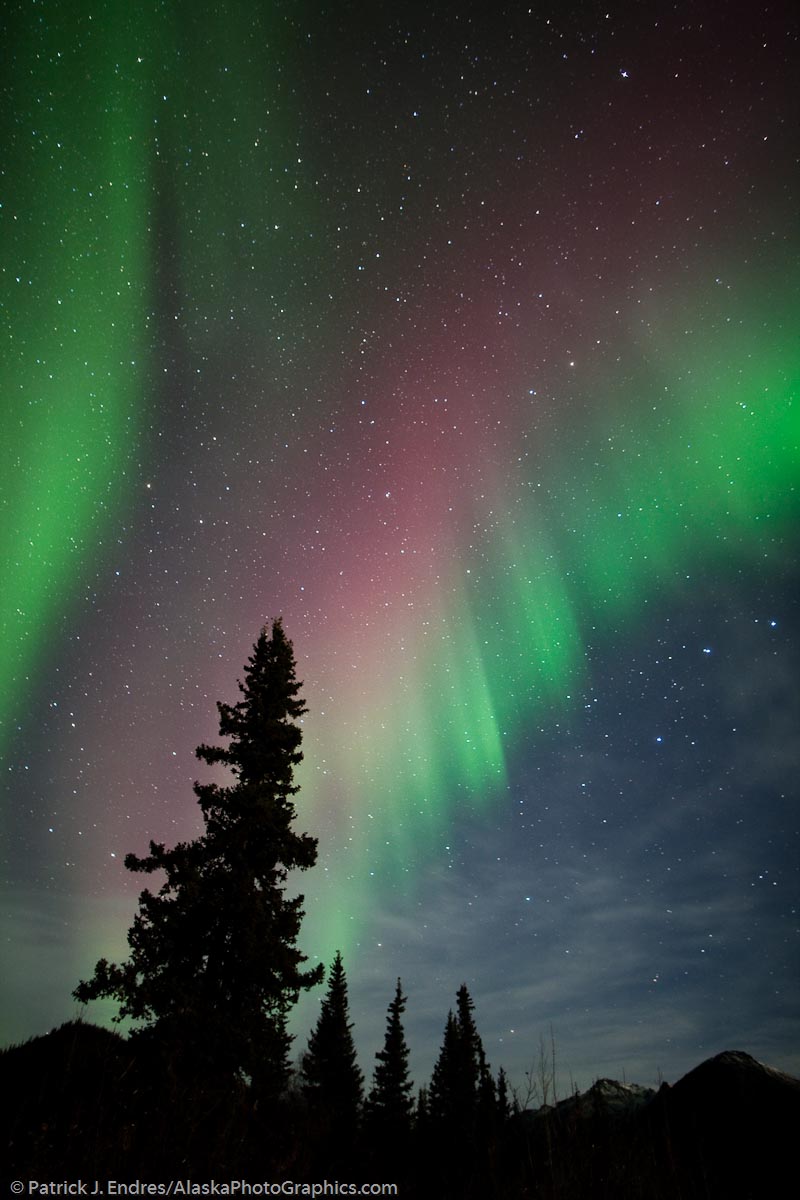
Red and green aurora borealis over the spruce trees. Canon 1Ds Mark III, 24mm f/1.4, 30 secs @ f/1.4, ISO 800. Lightroom modifications: increasted contrast and clarity, reduced brightness slightly, slight vignette control, no color saturation.
Each October, my friend, colleague and fellow guide Hugh Rose and I lead a trip of intrepid photo enthusiasts into Alaska’s arctic to chase its magical light. The aurora borealis, polar bears, arctic wildlife and other grand landscapes prompt many shutter clicks. The sights vary every year, in an amazing diversity of subject material. However, the two big lures, the poloar bears and the aurora borealis, at least to date, have been present every year. Due to a large degree of interest we elected to run two tours this year, so one more begins in a few days. On last Saturday evening, under rather warm conditions, we all spent the last night of the tour photographing the aurora, which filled the sky with waving light for more than three hours. This particular frame reveals a wash of red color that ironically was not very visible to the human eye. This can often be the case with red aurora, which happens much higher in the atmosphere, generally from 250-300 miles high, according to Dr. Syun-Ichi Akasofu who has written a helpful book on the aurora titled “The Northern Lights: Secrets of the aurora borealis” .
In order to capture this color, the key is to be aware of aurora shape and activity and of course shoot and review your images often. Digital camera’s have revolutionized and simplified aurora photography immensely, however, there is still an extensive checklist to go through before you begin. You can reference an article I wrote on how to photograph the aurora with a digital camera. I used Canon’s new 24mm f/1.4 II lens, which is a huge improvement over the previous version in sharpness. The aurora shape was relatively static, which served well for a long shutter speed of 30 seconds.






